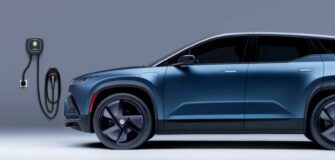Driving the Electric Revolution: Unpacking President Biden’s Impactful Climate Law

President Biden’s visionary climate law has ignited a wave of transformation in the American automotive landscape. With a focus on boosting electric vehicle (EV) production, the legislation has spurred substantial investments in battery plants and assembly lines, signaling a pivotal moment for the industry. However, while the surge in manufacturing is evident, the impact on actual EV sales has yet to fully materialize.
The Roadmap to Growth:
The heart of Biden’s climate law lies in its ability to tie the future affordability of electric vehicles to their production within the United States. By encouraging automakers to source and build EVs domestically, the law aims to create a sustainable ecosystem that benefits both the industry and consumers.
Leasing Takes the Lead:
While the climate law has not yet significantly influenced EV sales, it has inadvertently shaped consumer behavior. A Treasury Department regulation allowing auto dealers to bypass made-in-America requirements for leased vehicles has prompted many buyers to opt for leasing. This loophole enables consumers to fully capitalize on federal tax breaks that might otherwise be unavailable.
The Future Outlook:
Analysts anticipate a sharp uptick in electric vehicle sales under optimal conditions. To achieve this, automakers must continue investing in battery and assembly plants, and the government needs to accelerate the deployment of charging stations, crucial for the widespread adoption of electric vehicles.
Biden’s Vision:
President Biden’s push to rejuvenate the electric vehicle market aligns with the global shift towards cleaner fuels, outpacing initial expectations. As electric vehicles become a cornerstone in reducing emissions, government policies play a crucial role in ensuring a seamless transition. However, missteps could impede the growth of this burgeoning industry.
Beyond Climate Change:
The administration’s commitment to boosting electric vehicles extends beyond environmental concerns. It seeks to create middle-class jobs within the auto industry, envisioning a scenario where meeting made-in-America requirements fuels the rapid growth of the electric vehicle market in the United States.
The Cost Factor:
The relationship between meeting made-in-America standards and the consumer tax credit is pivotal. Without a robust American supply chain, electric vehicles lose out on the full $7,500 tax credit, rendering them less affordable than conventional automobiles. This dynamic does not apply to the leasing market, contributing to the shift in consumer preferences.
Challenges and Solutions:
To truly drive the electric vehicle revolution, financial assistance from manufacturers or the government is crucial. Tax credits have spurred significant U.S. investments, particularly in battery projects, but the industry must now focus on securing a stable supply chain for raw materials and parts needed for batteries.
Republican Skepticism:
Amidst the push for electric vehicles, some Republican leaders and analysts argue for a reevaluation of plans, emphasizing the potential subsidization of China. Concerns over the supply chain and the need to counterbalance China’s dominance in electric car technology are driving ongoing debates.
President Biden’s climate law has set the stage for a transformative era in the American automotive industry. As the electric vehicle market gains momentum, the success of the legislation hinges on continued investment, infrastructure development, and the resilience of the supply chain. The road ahead may have its challenges, but the journey toward a greener, electric future is well underway.









